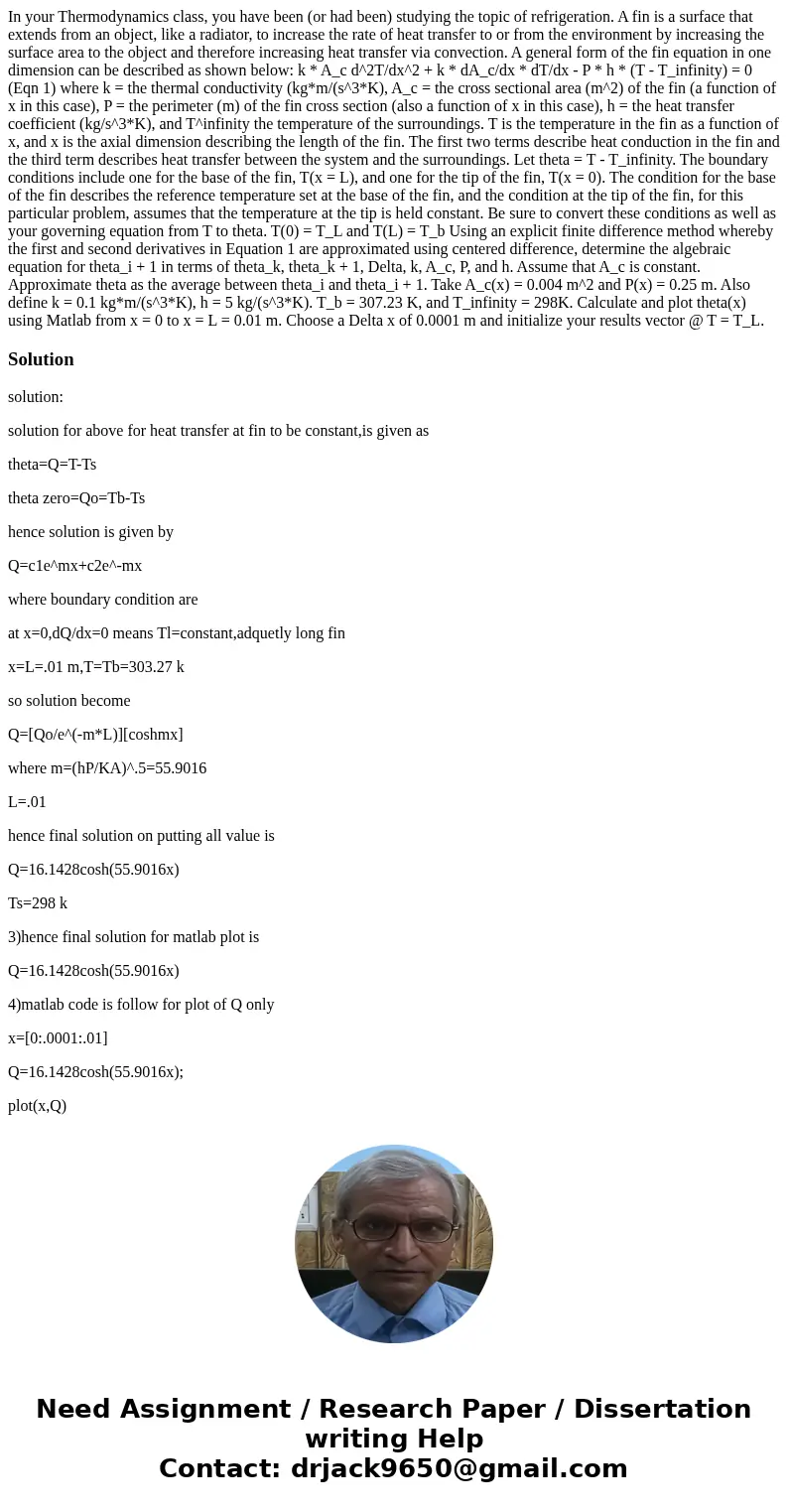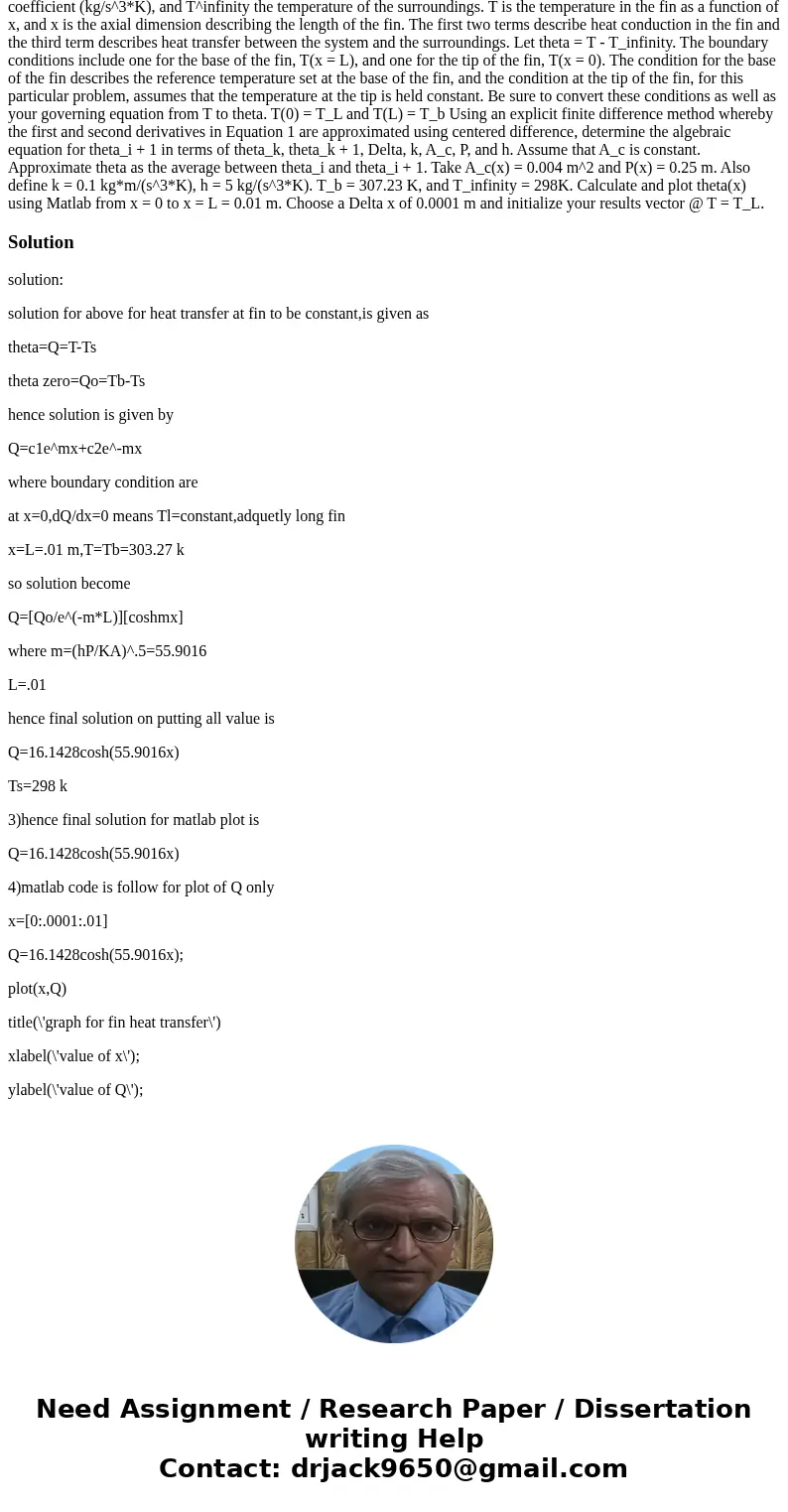In your Thermodynamics class you have been or had been study
In your Thermodynamics class, you have been (or had been) studying the topic of refrigeration. A fin is a surface that extends from an object, like a radiator, to increase the rate of heat transfer to or from the environment by increasing the surface area to the object and therefore increasing heat transfer via convection. A general form of the fin equation in one dimension can be described as shown below: k * A_c d^2T/dx^2 + k * dA_c/dx * dT/dx - P * h * (T - T_infinity) = 0 (Eqn 1) where k = the thermal conductivity (kg*m/(s^3*K), A_c = the cross sectional area (m^2) of the fin (a function of x in this case), P = the perimeter (m) of the fin cross section (also a function of x in this case), h = the heat transfer coefficient (kg/s^3*K), and T^infinity the temperature of the surroundings. T is the temperature in the fin as a function of x, and x is the axial dimension describing the length of the fin. The first two terms describe heat conduction in the fin and the third term describes heat transfer between the system and the surroundings. Let theta = T - T_infinity. The boundary conditions include one for the base of the fin, T(x = L), and one for the tip of the fin, T(x = 0). The condition for the base of the fin describes the reference temperature set at the base of the fin, and the condition at the tip of the fin, for this particular problem, assumes that the temperature at the tip is held constant. Be sure to convert these conditions as well as your governing equation from T to theta. T(0) = T_L and T(L) = T_b Using an explicit finite difference method whereby the first and second derivatives in Equation 1 are approximated using centered difference, determine the algebraic equation for theta_i + 1 in terms of theta_k, theta_k + 1, Delta, k, A_c, P, and h. Assume that A_c is constant. Approximate theta as the average between theta_i and theta_i + 1. Take A_c(x) = 0.004 m^2 and P(x) = 0.25 m. Also define k = 0.1 kg*m/(s^3*K), h = 5 kg/(s^3*K). T_b = 307.23 K, and T_infinity = 298K. Calculate and plot theta(x) using Matlab from x = 0 to x = L = 0.01 m. Choose a Delta x of 0.0001 m and initialize your results vector @ T = T_L.

Solution
solution:
solution for above for heat transfer at fin to be constant,is given as
theta=Q=T-Ts
theta zero=Qo=Tb-Ts
hence solution is given by
Q=c1e^mx+c2e^-mx
where boundary condition are
at x=0,dQ/dx=0 means Tl=constant,adquetly long fin
x=L=.01 m,T=Tb=303.27 k
so solution become
Q=[Qo/e^(-m*L)][coshmx]
where m=(hP/KA)^.5=55.9016
L=.01
hence final solution on putting all value is
Q=16.1428cosh(55.9016x)
Ts=298 k
3)hence final solution for matlab plot is
Q=16.1428cosh(55.9016x)
4)matlab code is follow for plot of Q only
x=[0:.0001:.01]
Q=16.1428cosh(55.9016x);
plot(x,Q)
title(\'graph for fin heat transfer\')
xlabel(\'value of x\');
ylabel(\'value of Q\');


 Homework Sourse
Homework Sourse